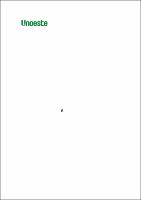| Compartilhamento |


|
Use este identificador para citar ou linkar para este item:
http://bdtd.unoeste.br:8080/jspui/handle/jspui/1645| Tipo do documento: | Dissertação |
| Título: | Uso da Fibrina Rica em Plaquetas associada a curativo bioativo de quitosana/xantana/β-glucana na cicatrização de feridas experimentalmente induzidas em coelhos |
| Título(s) alternativo(s): | The use of Platelet-Rich Fibrin associated with a bioactive dressing of chitosan/xanthan/β-glucan in the healing of experimentally induced wounds in rabbits |
| Autor: | Massaranduba, Nadiele Taise  |
| Primeiro orientador: | Santarém, Cecília Laposy |
| Primeiro membro da banca: | Silva, Valter Dias da |
| Segundo membro da banca: | Nogueira, Rosa Maria Barilli |
| Resumo: | A cicatrização de feridas é um campo dinâmico e em rápido crescimento no mercado mundial. Avanços na tecnologia resultaram no desenvolvimento de uma ampla gama de curativos para diferentes tipos de feridas visando as fases da cicatrização. O curativo ideal deve auxiliar em uma cicatrização mais eficiente, preservar a hidratação da pele, ser oxigênio permeável, não aderente e hipoalergênico, e fornecer uma barreira contra contaminantes a um custo razoável e com o mínimo de inconveniência para o paciente. Portanto, a escolha do melhor curativo deve ser baseada no que a ferida precisa e no que o curativo faz para alcançar a regeneração completa e restauração da estrutura e função da pele. Biopolímeros como quitosana, são amplamente utilizados no tratamento de feridas devido à sua biocompatibilidade, biodegradabilidade e similaridade a macromoléculas reconhecidas. No entanto, a maioria das formulações baseadas em biopolímeros ainda apresentam vários problemas; assim, estratégias para combiná-los com biomateriais como fibrina rica em plaquetas autóloga (FRPa) representam o futuro da cicatrização de feridas. Foram utilizados 24 coelhos a fim de caracterizar as alterações macroscópicas de feridas experimentalmente induzidas e tratadas com fibrina rica em plaquetas autóloga com e sem curativo bioativo sobre os aspectos morfológicos associados ao processo cicatricial, nos dias 07,14,21 e 28. Conclui-se que a FRPa se mostrou mais promissora em relação ao tempo de cicatrização das feridas, entretanto, nas análises morfológicas o uso da membrana não proporcionou um efeito sinérgico quando associada ao biomaterial. |
| Abstract: | The use of Platelet-Rich Fibrin associated with a bioactive dressing of chitosan/xanthan/β-glucan in the healing of experimentally induced wounds in rabbits. Wound healing is a dynamic and rapidly growing field in the global market. Advances in technology have led to the development of a wide range of dressings for different types of wounds targeting the four phases of healing. The ideal dressing should promote rapid healing; preserve skin hydration; be oxygen-permeable, non-adherent, and hypoallergenic; and provide a barrier against contaminants - all at a reasonable cost and with minimal inconvenience to the patient. Therefore, the choice of the best dressing should be based on what the wound needs and what the dressing does to achieve complete regeneration and restoration of the skin structure and function. Biopolymers such as chitosan are widely used in wound treatment due to their biocompatibility, biodegradability, and similarity to recognized macromolecules. However, most biopolymer-based formulations still present several problems; thus, strategies to combine them with biomaterials like autologous Platelet-Rich Fibrin (PRF) represent the future of wound healing. Twenty-four rabbits were used to characterize the macroscopic changes in experimentally induced wounds treated with autologous platelet-rich fibrin with and without a bioactive dressing on morphological aspects associated with the healing process, on days 07, 14, 21, and 28. Thus, this study aimed to analyze the use of biomaterials with or without the bioactive dressing of chitosan complexed with xanthan and β-glucan in the healing of wounds induced in rabbits, characterizing the macroscopic and morphometric effects. It is concluded that aPRF proved to be more promising in relation to wound healing time, however, in morphological analyzes the use of the membrane did not provide a synergistic effect when associated with the biomaterial. |
| Palavras-chave: | Reparação tecidual, colagenização, biomateriais, biocurativos. Tissue repair, collagenization, biomaterials, biocuratives. |
| Área(s) do CNPq: | CIENCIAS AGRARIAS::MEDICINA VETERINARIA |
| Idioma: | por |
| País: | Brasil |
| Instituição: | Universidade do Oeste Paulista |
| Sigla da instituição: | UNOESTE |
| Departamento: | Mestrado em Ciência Animal |
| Programa: | Mestrado em Ciência Animal |
| Citação: | Massaranduba, Nadiele Taise. Uso da Fibrina Rica em Plaquetas associada a curativo bioativo de quitosana/xantana/β-glucana na cicatrização de feridas experimentalmente induzidas em coelhos. 2024. 42f. Dissertação (Mestrado em Ciência Animal) - Universidade do Oeste Paulista, Presidente Prudente, 2024. |
| Tipo de acesso: | Acesso Aberto |
| URI: | http://bdtd.unoeste.br:8080/jspui/handle/jspui/1645 |
| Data de defesa: | 28-Ago-2024 |
| Aparece nas coleções: | Mestrado em Ciência Animal |
Arquivos associados a este item:
| Arquivo | Descrição | Tamanho | Formato | |
|---|---|---|---|---|
| Nadiele Taise Massaranduba.pdf | Nadiele Taise Massaranduba | 1,71 MB | Adobe PDF |  Baixar/Abrir Pré-Visualizar |
Os itens no repositório estão protegidos por copyright, com todos os direitos reservados, salvo quando é indicado o contrário.




